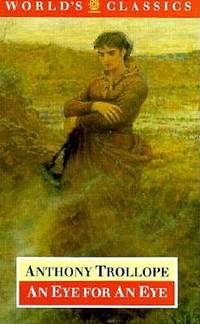
An Eye for an Eye (1879) is classed among Trollope’s Irish novels, and the dramatic beauty of Co. Clare forms a suitable background to the wild passion that drives the plot. English cavalry office Fred Neville seduces a local Catholic girl, Kate O’Hara, leaving her pregnant. Although madly in love with her, the sudden unexpected inheritance of an earldom prompts Fred to rethink his plan to marry her: “She was a plaything for an idle hour, not a woman to be taken out into the world with the high name of Countess of Scroope.” Kate’s mother suspects that he is poised to abandon her and threatens: “if you injure my child I will have the very blood from your heart.” As the title suggests, this is no idle threat.
When it comes to light that Kate’s estranged father is a swindler and former convict, Fred makes his excuses and flees back to England, after unsuccessfully trying to make Kate his clandestine bigamous wife. Mrs O’Hara, having lost the prospect of a good marriage for her daughter, seizes on the first opportunity to wreak her terrible revenge on the man who brought them ignominious misery.
An Eye for an Eye is essentially a reworking of one of Trollope’s favourite plots: the young man endlessly vacillating between love and duty. Fred Neville is one of a long succession of invertebrates with whom it is difficult to feel sympathy. His aunt, the Dowager Countess of Scroope, is a much more interesting character. She is aware that her nephew has left a young girl pregnant, but still pushes him to marry an heiress. The reader is allowed to eavesdrop on her interior monologue, in which she upholds the sexual double standard, approving of a different code of morals for men and women: “That which merited instant … and perpetual condemnation in a woman, might in a man be very easily forgiven.” After the tragic consequences unfurl, the Countess is overcome with grief, realising her own responsibility for what has happened: “I knew that he had wronged her, and yet I bade him not to make her his wife.” She spends her remaining years in isolation, doing penance for her sin.
This novel is by no means my favourite Trollope, but it is hard not to be struck by the dramatic events and tragic dénouement. It’s one of Trollope’s shortest works and feels as though he meant to develop it into a much longer story. I have found no evidence to suggest this might be the case, but the concise nature of book does serve to concentrate its power and focus the reader’s attention on a woman determined to take justice into her own hands when society fails to condemn the guilty.
An Eye for an Eye by Anthony Trollope